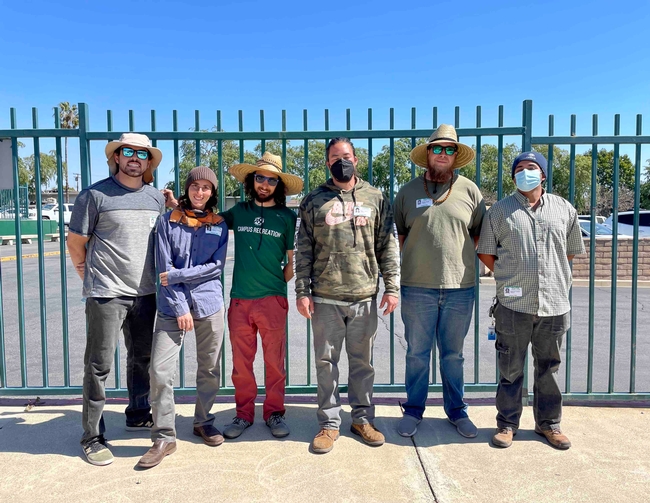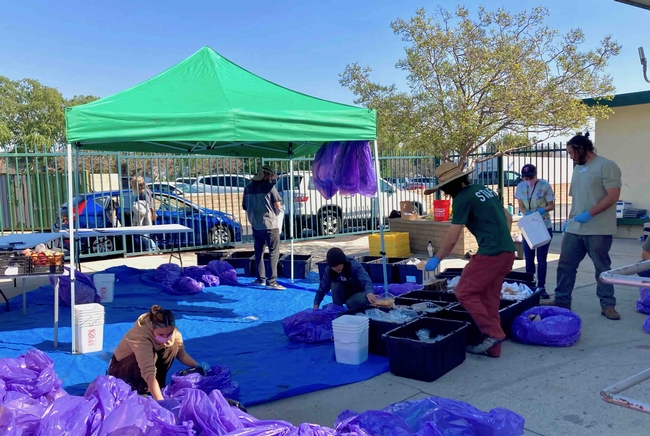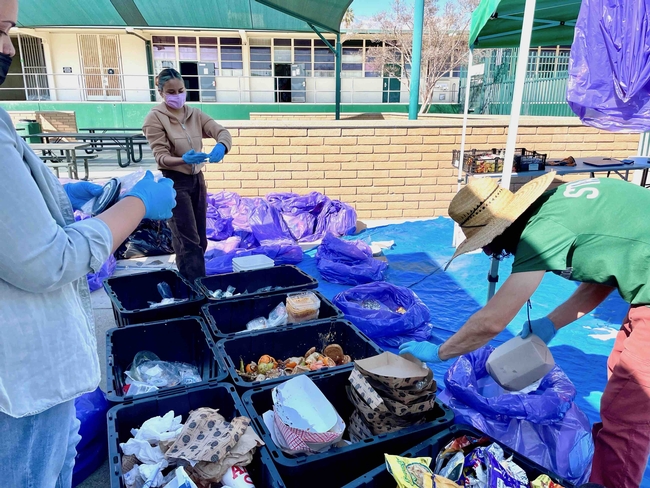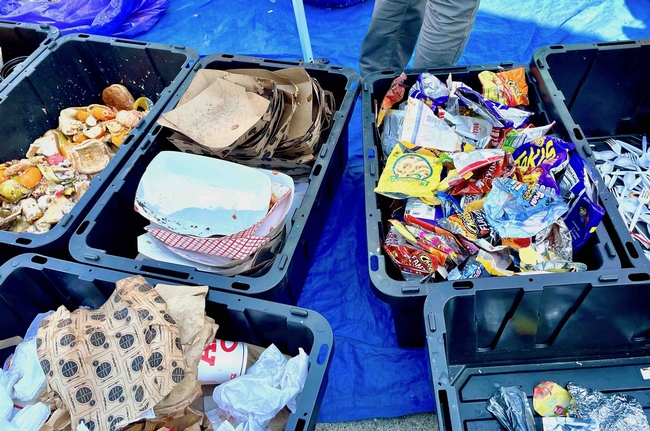Ever since Senate Bill 1383 took effect earlier this year, local governments and organizations across California have been scrambling to develop strategies to recycle organic waste. Schools are no exception. As I discussed in my February blog, SB 1383 requires our state to reduce organic waste disposal by 75% and increase edible food recovery by 20% by 2025 (relative to 2014 levels). California schools and universities generate over 560,000 tons of waste per year according to CalRecycle.[1] While implementing programs to reduce and recycle waste, schools are in a unique position to teach youth about a wide variety of environmental topics including resource conservation, composting, and food rescue.
A good way for schools to start developing a waste handling strategy is to conduct a waste audit. The main goal is to characterize the type, quantity, and source of materials being discarded. An audit is often part of a more comprehensive assessment to evaluate school district policies and procedures that affect waste generation. In 2014, CalRecycle performed a waste characterization study using 45 samples from K-12 schools.[2] The study showed that the largest components of the waste stream were organics (50.8%), paper (31.4%), and plastic (12.7%). The organics category included food, plant material, and some textiles.
I recently helped Cassidy Furnari, the Upland School District Farm to School Program Manager, conduct a lunchtime cafeteria waste audit at Upland High School. The Farm to School Program is part of the Nutrition Services Department, which is concerned about food waste and cost. Cassidy and I recruited members of the school garden club, GRO (Grow Recycle Organize), to participate in the audit to empower them to promote change on campus. The students are currently preparing to present their results at an upcoming Board of Education meeting.
The first step we took in planning our waste audit was to write a brief project plan. To keep the project manageable, we decided to perform an audit during a typical 30-minute lunch period. Upland High School has over 3000 students who all eat at the same time. Only seniors are allowed to leave campus during lunch.
To avoid influencing student behavior, we didn't make any major changes to the meal service or trash disposal. Rather than asking students to sort their own waste, we placed distinctive purple liners inside existing trash containers shortly before the lunch period. The week before the audit we counted over 90 trash containers in the areas where students eat lunch.
During the planning process, we informed and consulted with the school administration, cafeteria staff, custodial staff, and parents of the garden club members. We also asked for help from our friends at the Community Composting for Green Spaces Grant Program to tap into their experience with waste audits.
To design our data collection sheets, we considered what questions we wanted to answer. What is the total weight of the waste? How much of the waste is food, paper, plastic, aluminum, and glass? How much can be composted or recycled? How much uneaten cafeteria food can be recovered? By answering these questions and others, we can help the Nutrition Services Department make more sustainable and economical food purchasing and packaging decisions.
After a month of planning, the big day of the waste audit finally arrived on March 9th. Our team consisted of nine people from Upland Farm to School and Community Composting for Green Spaces. Our first tasks were placing purple bags in the trash receptacles and setting up a staging area to sort the waste. Before we knew it, the lunch period had come and gone, and the hard work of collecting the bags and sorting the waste began. Sorting was much messier and more tedious than I had expected, especially since we had over 30 waste categories. The garden club members joined us after school to help count, weigh, and record the items in different waste categories. We eventually finished tallying the results and cleaning up six hours after we started. It was a long day!
What did we learn from our waste audit? Although we're still analyzing the results, we've already answered our initial questions. The total waste generated in a single lunch period was 370 lbs. The two largest types of waste material by weight were food (63%) and paper (19%), and more than 80% of the waste was compostable or recyclable. Students threw away over 200 pieces of uneaten whole fruit and 40 unopened cartons of milk, which potentially could have been recovered. Every question we answer gives rise to new questions and new ways to examine the data. We're already thinking about performing a waste audit at an elementary school to see how the waste profile compares.
I hope this story inspires you to support waste reduction, recycling, and recovery efforts in your local schools. Stay tuned for an update on my journey into school waste auditing in a future blog!
[1] CalRecycle. School Waste Reduction Programs. https://calrecycle.ca.gov/recycle/schools
[2] CalRecycle. School Waste Composition. https://calrecycle.ca.gov/recycle/schools/composition
Attached Images:



